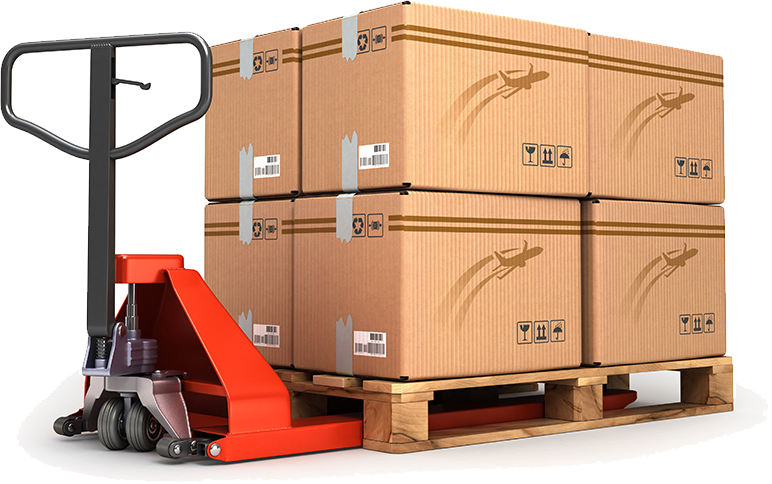
This service is ideal for commodities that are unpackaged or may require refrigeration, climate control, flatbeds or other special accommodation for oversize or overweight shipments. Truckload shipping is not the least expensive transportation option, but it can be much faster than LTL freight because it requires no truck transfers (e.g., unloading and reloading of your shipment).

Different from LTL freight, this type of freight involves a dedicated truck that moves fewer loads at one time and handles all types of commodities; including refrigerated, temperature-controlled, hazardous material and overweight or oversized goods. Partial truckload shipping is reserved for medium-size loads that are booked by volume or require running feet of a truck.

By far the most popular type of freight transportation, LTL freight is generally shipped by truck to and from your pickup and destination locations. LTL freight shipping is the most cost-effective, reliable and timely service because your shipment shares a truck with other LTL freight shipments.

If your shipment is delicate or has a high risk of damage, then a dedicated truck with air-ride suspension is the most preferred method of transportation. For this type of freight, air ride provides a softer ride than a standard freight truck. Because this type of service is used less frequently it can often be more expensive than a standard full or partial truckload shipment.

Expedited freight shipping is predictable because it allows different types of freight to be moved at a very high speed. Although not the same as “Guaranteed Delivery,” expedited freight has a speedy transit time and is usually arranged with delivery between one and five days after pickup.

If the type of freight you are shipping requires it to be delivered on a certain date and time, then guaranteed delivery is your best option. If the delivery is late, you will be reimbursed for the difference between the guaranteed price and the standard or nonguaranteed rate.
THE DIFFERENCE BETWEEN FTL, PARTIAL AND LTL
• FTL (Full Truck Load) – Think full truck, so greater than 8,000 pounds and requires a large space such as the full trailer of an 18-wheeler.
• LTL (Less Than Truck Load) – A relatively small load, and consequently the least expensive and most popular freight transportation method.
• Partial Truck Load – Call this a medium-size truck load, which is usually booked by volume.
In very general terms, we could say that the full truck service (FTL) is recommended for large and heavy loads, which occupy all or most of the trailer, while the partial truckload transport service is the most economical if less than 30 linear feet of the trailer will be occupied. Lastly, a Less than Truckload service (LTL) is the best option for smaller loads.
How to Navigate Today’s Less Than Truckload (LTL) Market
In a perfect world, consumers would be on a constant purchasing frenzy and every company would receive orders for Full Truckload (FTL) quantities. However, with consumer preferences becoming more dynamic, product lines becoming more diverse, lead times shrinking and retailers working on Just-In-Time (JIT) inventories, Less Than Truckload (LTL) shipping is in higher demand than ever. Frequent smaller shipments to multiple locations are quickly becoming the norm. FTL is simple; your shipment volume is large enough to warrant booking an entire truck for the long haul, so you pay the full price for the route. LTL is a bit more complex with multiple variables factoring into the pricing and planning, which vary dramatically by carrier. These are a few key tips for navigating today’s LTL market:
Know your freight class
This prevents additional charges such as re-classification fees and different rates being applied to the shipment from what you were quoted and expected. Freight class is based on your commodity’s density, value and NMFC (National Motor Freight Classification) Code. With LTL you are sharing the costs of the trailer with other shippers, so space utilization is the highest priority. The denser your product is the lower your costs will be, because your product will occupy less space and may be stackable. You can utilize our freight class calculator to help determine your freight class based on its density (Total Weight divided by Total Cubic Feet of the shipment).
Make sure you provide all relevant and accurate information at the time of quoting
This prevents additional charges from coming into play such as re-weigh fees, appointment scheduling charges, special service requirements and other unanticipated charges. Your transportation provider can only develop pricing based on the information you provide, so don’t be surprised if inaccurate information leads to additional charges.
Know the capabilities of your service provider
Not all LTL companies are the same, nor do they all service the same points, so before tendering a shipment to a carrier, make sure it’s within their wheelhouse. For example, if you’re concerned with retailer and distributor chargebacks, consider utilizing a service provider that focuses on compliance.
Make the process easier for the carrier
Being respectful of the driver and their time is one of the most important things that can be done in today’s market with limited capacity. This will also make it easier for you to build up your carrier network and utilize reliable carriers repeatedly. In this market, you need to make sure that carriers want to work with you.
The LTL capacity crunch is showing no signs of letting up anytime soon. To ensure that you have transportation options for your freight, you need to be proactive and strategic in your relationships with reliable transportation partners. Are you tired of not knowing what you’ll be charged, whether your LTL provider will even show up or managing too many carrier relationships? Have a conversation with Continental Logistics today.
